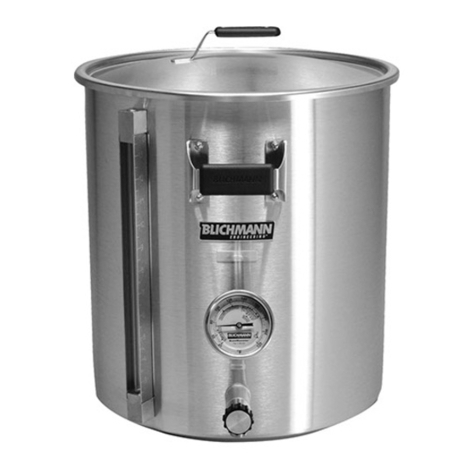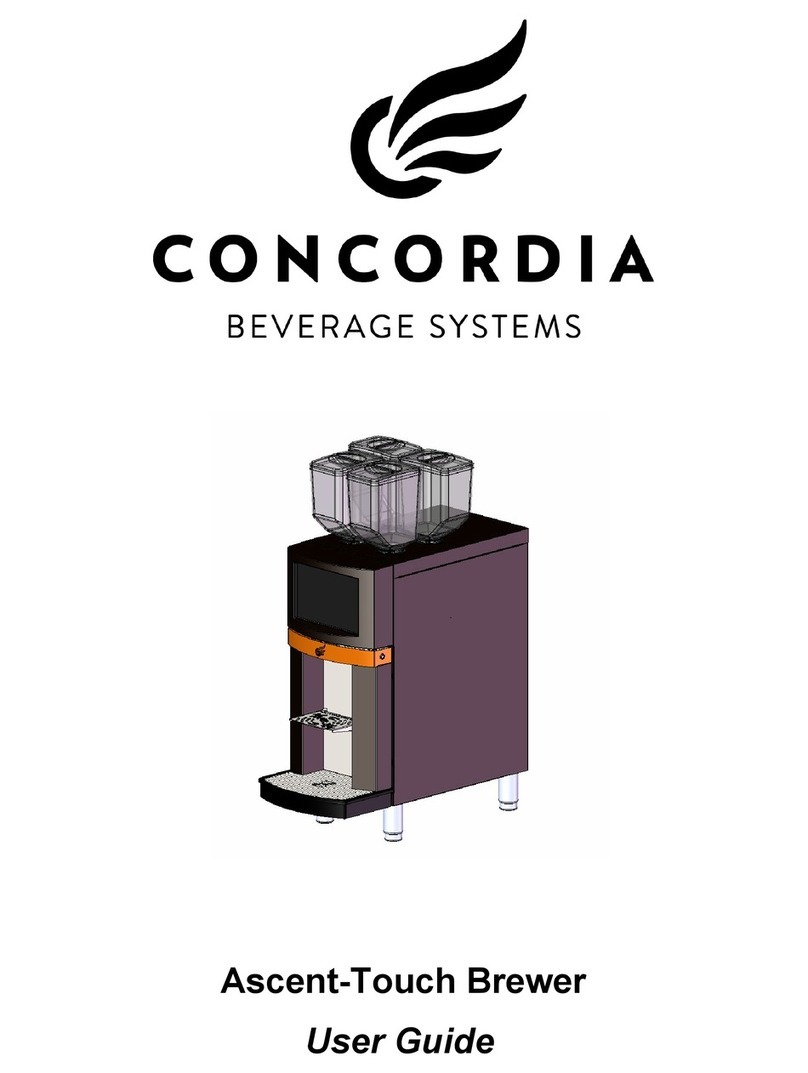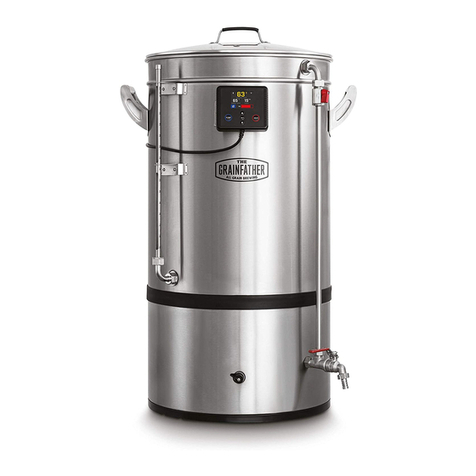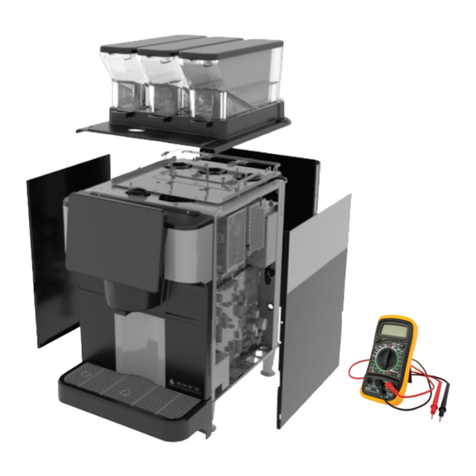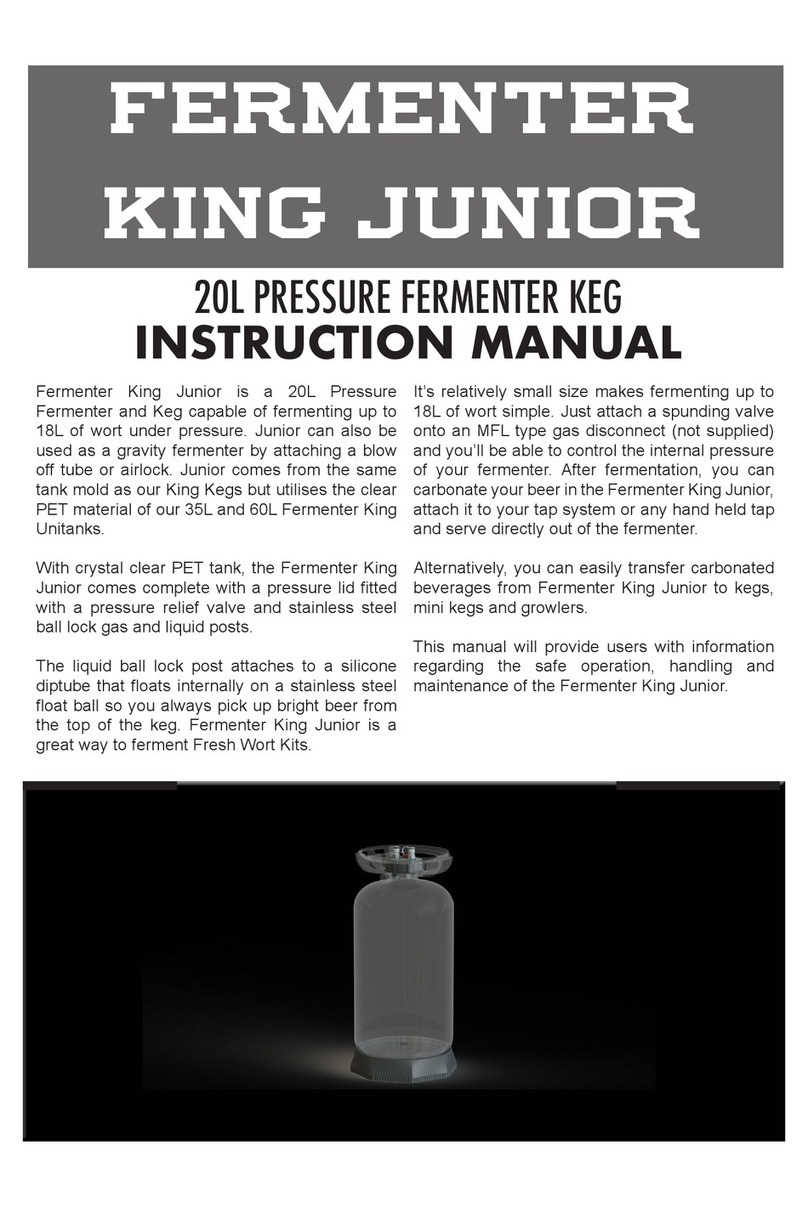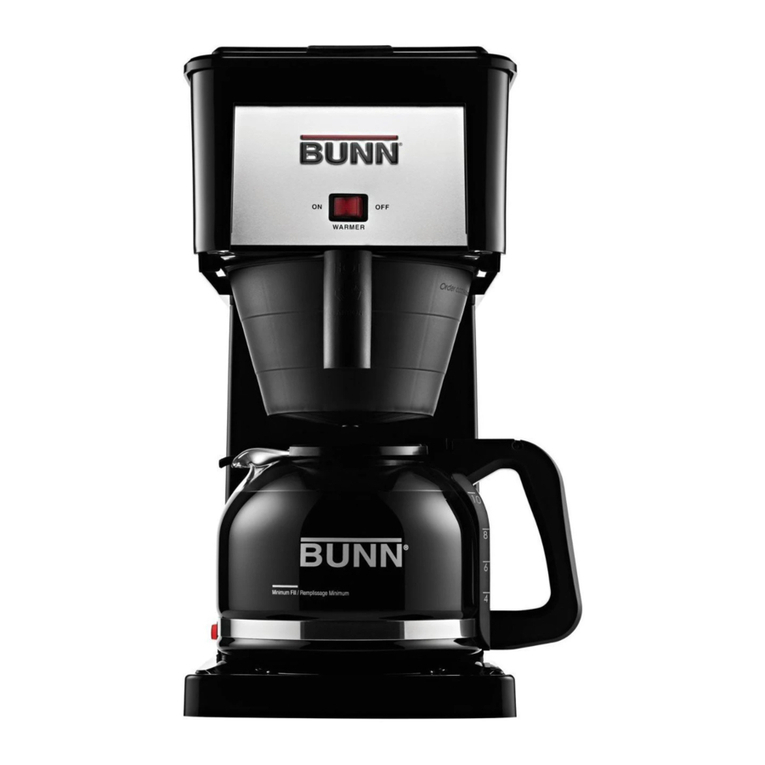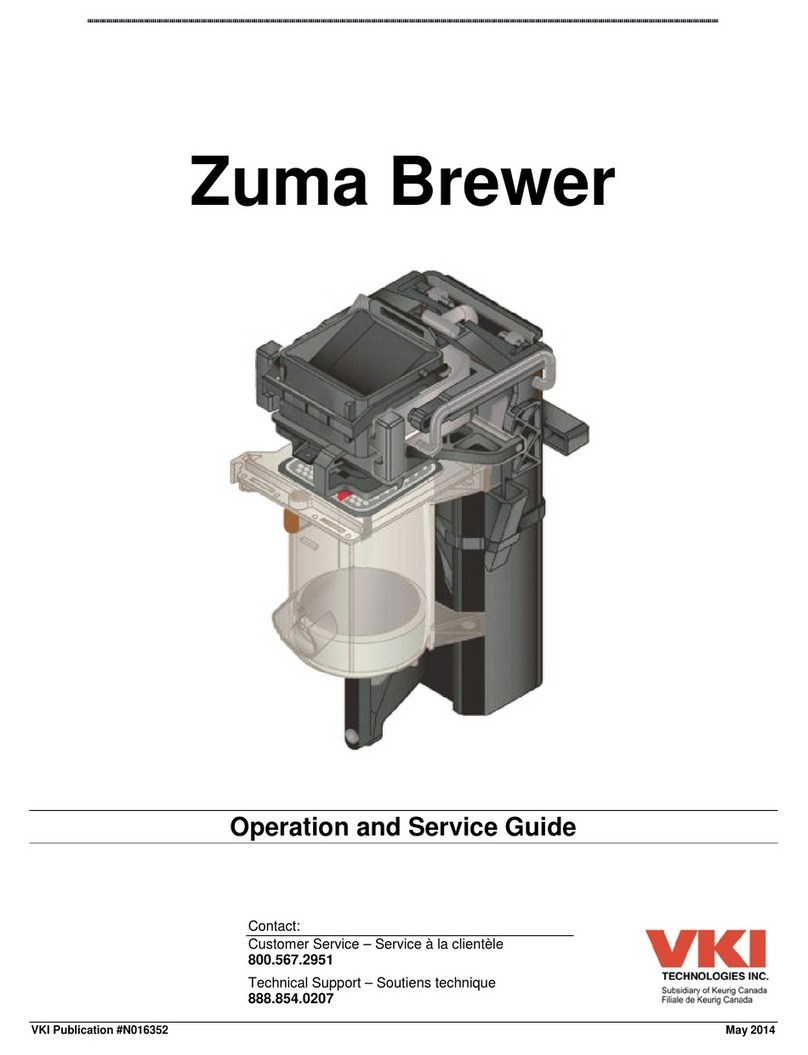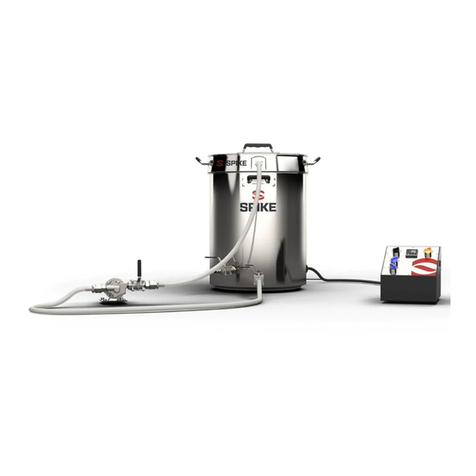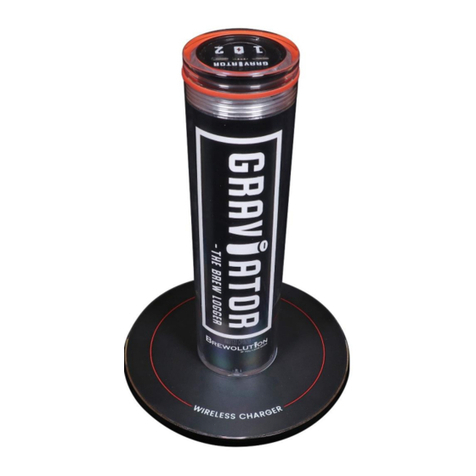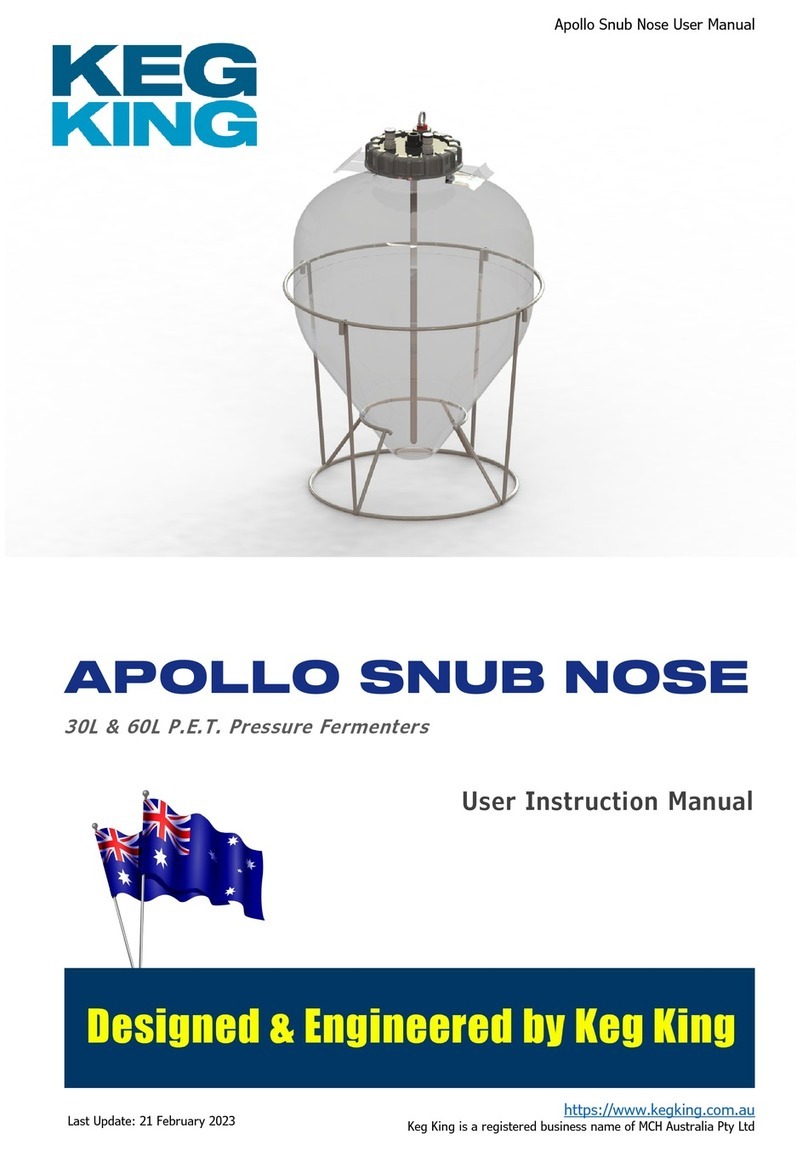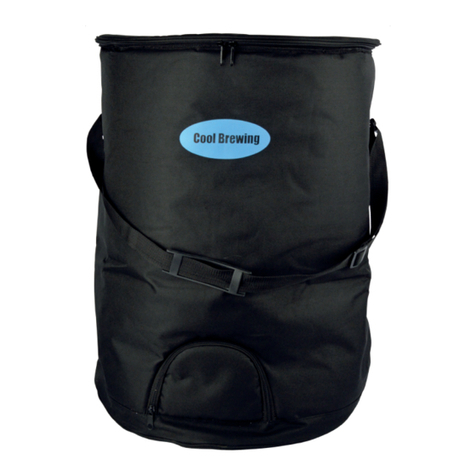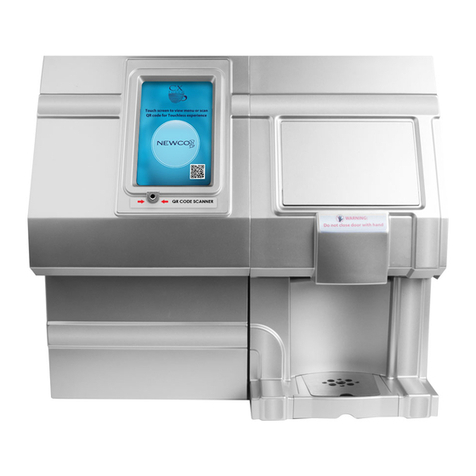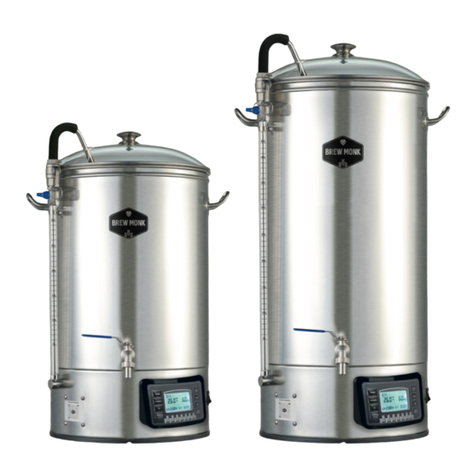
10 Single–Tier Manual • MoreBeer.com • 1–800–600–0033
Single–Tier Manual • MoreBeer.com • 1–800–600–0033
Once we have our mash water in our mash tun, we can attach the propane tank, plug the BrewSculpture into
your wall, and fire up the mash tun burner. We’ll want to heat it up to a temperature above what you’re actually
hoping to mash at, as that temperature will drop once the room temperature grain is introduced and stirred
in. This temperature drop will be dependent on how much grain will be used, how much water you have in the
mash tun, and what the ambient temperature is where you’re brewing. Due to this, it’s hard to recommend
how far above your mash temperature you’ll want to heat your water to prior to doughing-in. A wide, general
Digital Single-Tier Brew Day
grain bed dry. This will take a little fine tuning of the ball valves on both the hot liquor tank and mash tun. The
sparge process should take between 45–75 minutes, so if it seems like your hot liquor tank will be dry after 20
minutes, it’s best to close both ball valves a little more to slow down the flow. Finding that perfect flow rate
may take a few batches, so make note on how far open you have the valves, and how long it took to sparge at
that position.
Once we’ve filled our boil kettle past the thermometer probe, it’s time to fire up that burner to bring our wort
to a boil! It’s best to have the burner turned up all the way while getting to a boil, however once we achieve
a boil we may want to turn it down to help prevent a boil over. Make sure to close the ball valves of your hot
liquor tank, mash tun, and boil kettle once the desired volume has been collected in your boil kettle.
At the very beginning of the boil, you’ll most likely experience the “hot break”. This is identifiable by a layer
of foam forming on the top of your wort, and is a good thing unless it spills all over your BrewSculpture and
kettle! To prevent the hot break from a “boil-over”, either reduce the heat or spray the foam with water out
of a spray bottle. Blowing on the foam can help a little also, but only if the heat has been reduced first. You
could try using foam control, or “FermCapS” (our part number AD290). Just add a couple of drops when this
foam starts to form, and this should help reduce it. After getting through the hot break, start your timer for
the length of the boil you’ll be doing. 60, 75, and 90 minutes are generally the most common boil times, but
depending on your brewing style and recipe, other times may be appropriate also. Through the boil, you’ll be
adding your hops, adjuncts, and other ingredients as the recipe calls for them. NOTE: Whole leaf hops will need
to be put into a mesh bag, as they will clog the ball valve if they’re not contained. While your wort is boiling, you can save
time by connecting the long piece of tubing to the mash tun ball valve, and open it allowing any extra liquid
drain into a bucket/drain.
With about 15 minutes left in the boil, we’ll want to start the whirlpool re-circulation. While the whirlpool
will be ineffective until we turn the flame off and kill the boil, re-circulating through your tubing, pump, and
potentially your plate or counterflow wort chiller will help ensure that any possible wild yeast or bacteria that
happened to be there is killed by the boiling temperature of the wort.
At the end of the boil, we’ll turn the flame off and allow the whirlpool to run for 1–2 minutes. After the 1–2
minutes is up, you can turn the pump off, and allow the whirlpool to settle. The reason we want to create this
whirlpool is to accumulate all of the hop sediment, grain particles that made it through during sparge, extra
proteins, etc. in the center of the boil kettle. Allow the whirlpool to settle in the center of the kettle for about
15 minutes (you can crack the boil kettle lid open to see if it’s still swirling around – if not then you’re ready to
transfer). If you’re using an immersion chiller, you’ll want to wait until your wort is at the desired temperature
prior to transferring. If you’re using a plate or counterflow chiller, you’ll be ready to transfer through the chiller
once the whirlpool has settled. To transfer into your fermenter(s), you’ll want to close the whirlpool ball valve,
disconnect the quick disconnect, and run that length of tubing to your fermenter(s). Make sure the kettle and
pump ball valves are open, and turn the pump on! NOTE: Transferring at a slightly slower rate will help ensure that
you do not create too much suction on the inside of your boil kettle, which will help keep the hop sediment to remain in the
center of the boil kettle.
